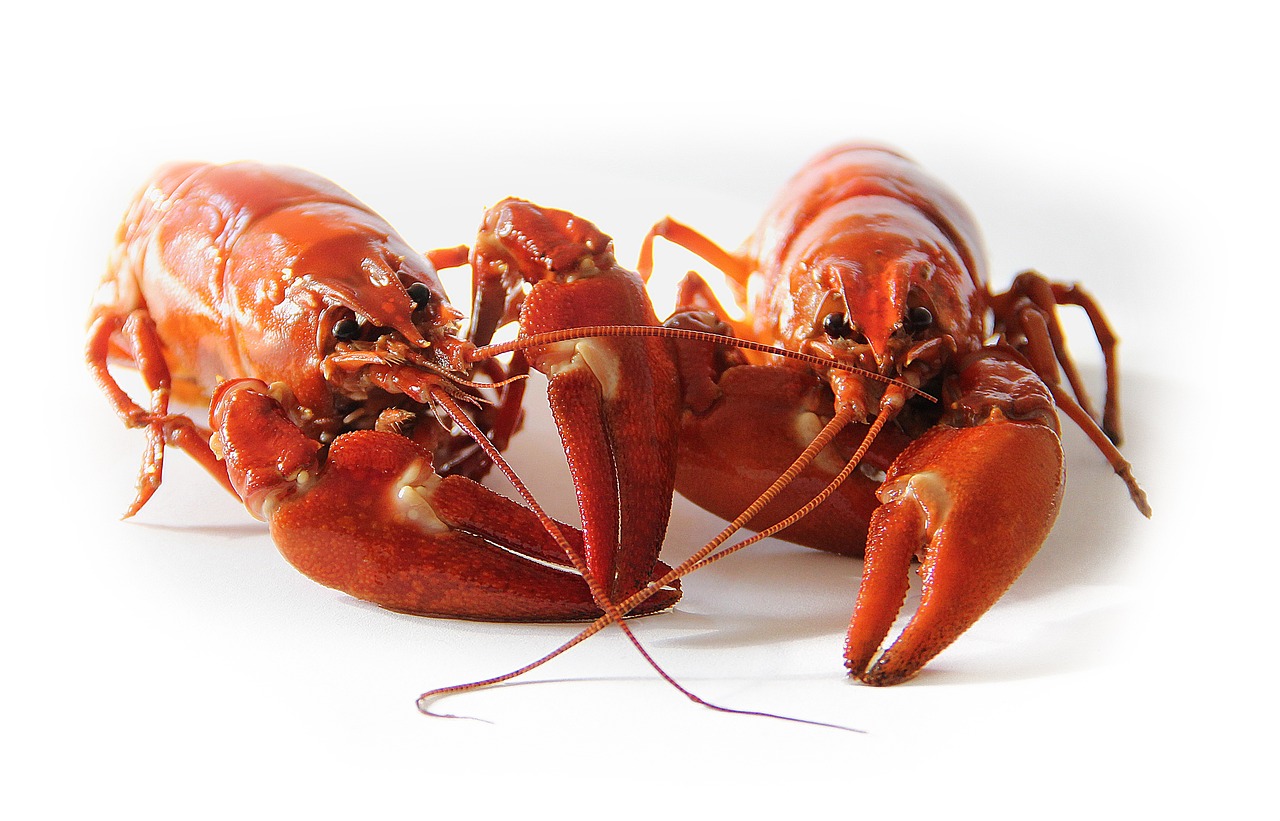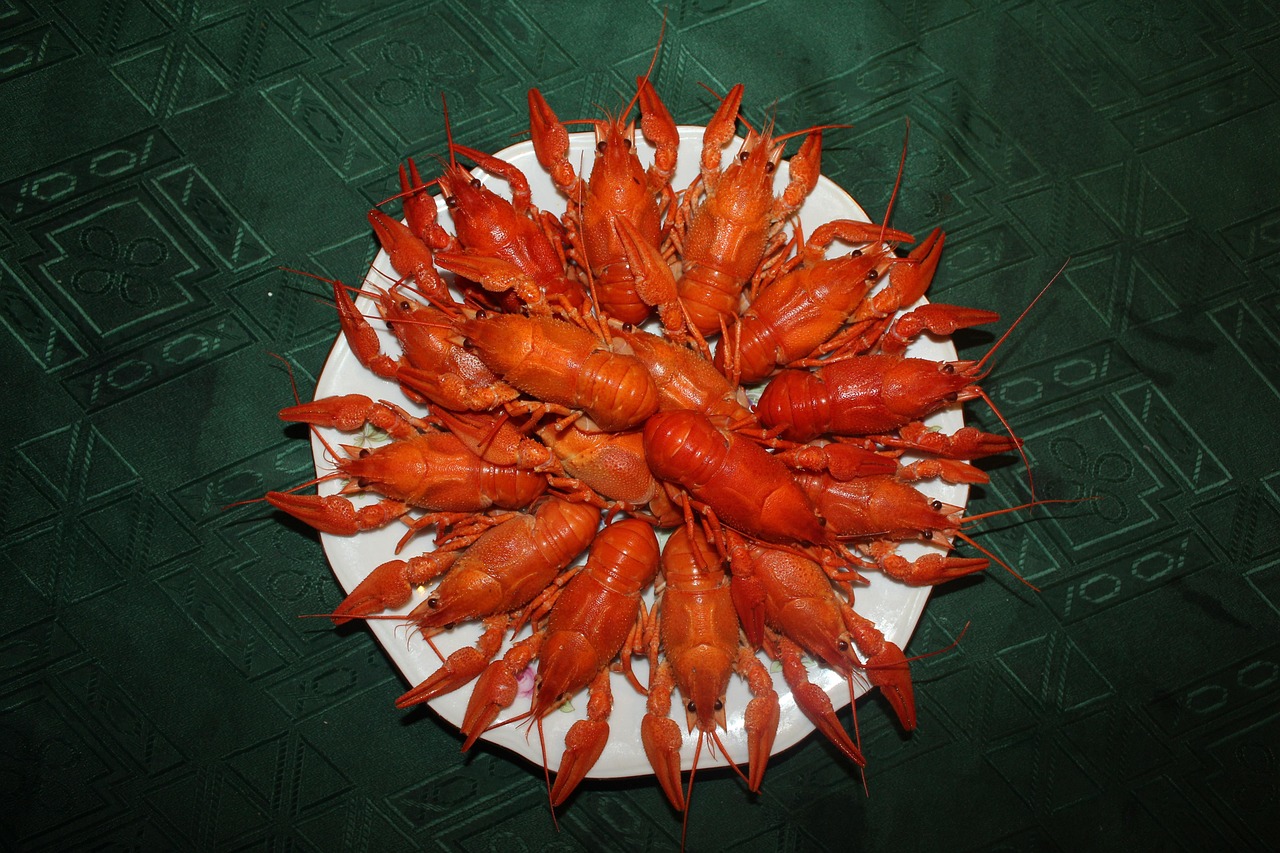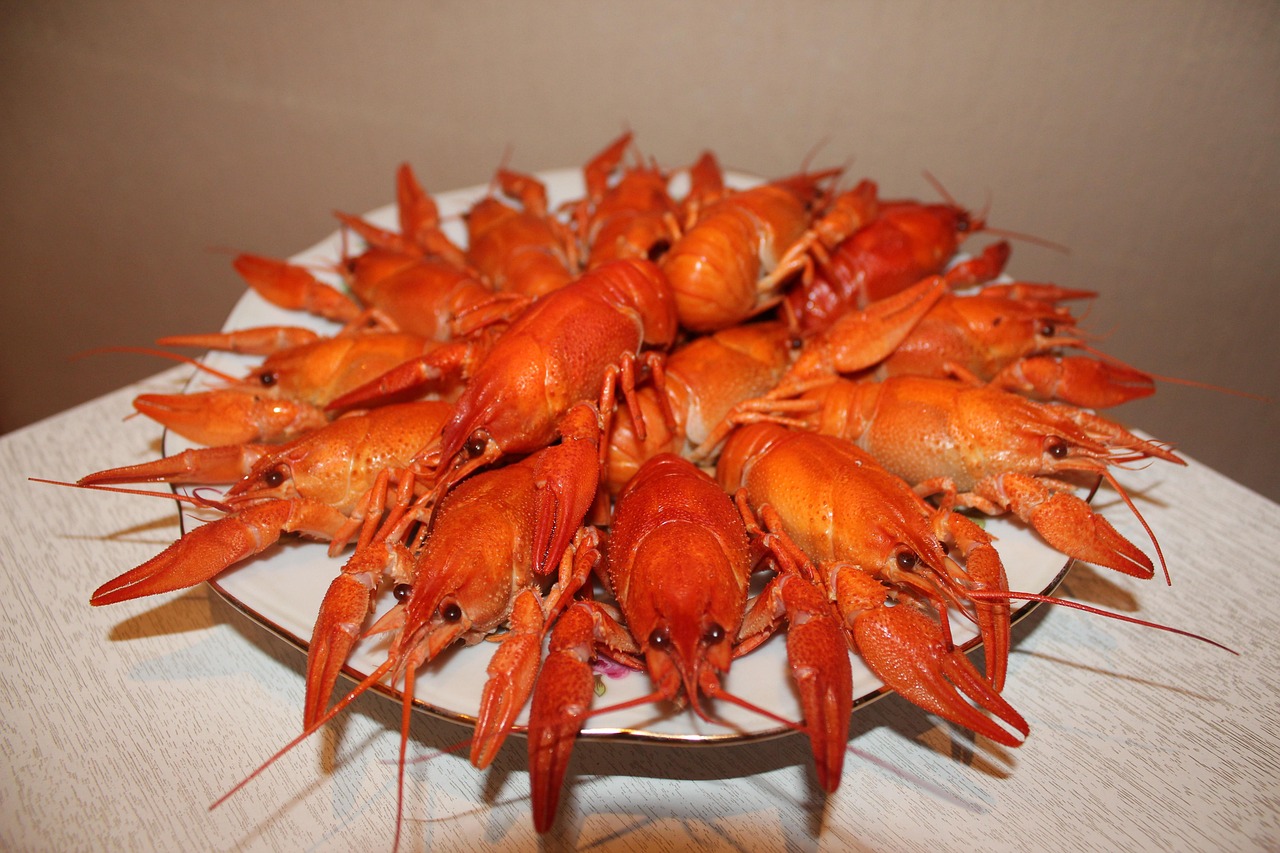To effectively get rid of crayfish in your lawn, consider using natural repellents, trapping methods, and habitat modifications. You can also apply certain pesticides designed for crayfish control, but always follow local regulations and guidelines for safe use.
Crayfish, often referred to as crawfish or freshwater lobsters, are commonly found in ponds, streams, and wetland areas. However, they can invade lawns and gardens, causing significant damage to the soil and plants. Their burrowing habits can lead to unsightly holes and compromised root systems. Understanding how to manage these creatures can protect your landscape and maintain its beauty.

Before diving into effective methods for controlling crayfish populations, it is essential to recognize the conditions that favor their presence. Crayfish thrive in areas with abundant moisture and organic matter. Lawns that are poorly drained or have standing water are particularly susceptible to infestations. Additionally, if your property is near a water source, it can increase the likelihood of crayfish invading your lawn.
Understanding Crayfish Behavior
Crayfish are nocturnal creatures that are most active at night. They tend to emerge from their burrows in search of food, primarily consisting of decaying plant material, insects, and other organic matter. Because of their feeding habits, they can significantly affect the health of your lawn.
Here are some key characteristics of crayfish behavior:

- Crayfish build burrows in moist soil, which can disrupt lawn aesthetics.
- They are opportunistic feeders and will consume various organic materials.
- Crayfish can reproduce quickly, leading to rapid population increases.
Knowing these behaviors can help you devise effective strategies for controlling their presence in your lawn. By targeting their feeding habits and altering their habitat, you can reduce their numbers significantly.
Effective Control Methods
There are several effective methods you can employ to control crayfish in your lawn. Each method varies in approach, effectiveness, and environmental impact. Below are some of the most widely used strategies:
Natural Repellents
Natural repellents can deter crayfish without harming the environment. Some effective options include:

- Cayenne Pepper: Sprinkling cayenne pepper around areas where crayfish are active can create an unpleasant environment for them.
- Soap Mixture: Mixing dish soap with water and applying it to burrows can suffocate crayfish when they come into contact with it.
Trapping
Trapping is another effective way to control crayfish populations. You can use commercially available traps or make your own using simple materials. Here’s how:
- Choose a location where crayfish activity is high.
- Set traps in the evening for better results.
- Bait the traps with fish or other organic materials to attract crayfish.
- Check traps regularly and remove any captured crayfish.
Habitat Modifications
Modifying the habitat can significantly reduce crayfish populations. Consider the following actions:
- Improve Drainage: Ensure proper drainage in your lawn to eliminate standing water.
- Aerate Soil: Aerating the soil can help reduce the moisture level that attracts crayfish.
Pesticides
If natural methods are ineffective, you may consider chemical options. However, it is crucial to choose pesticides specifically labeled for crayfish control. Always follow local regulations regarding pesticide use. Consult with a local extension office or pest control professional for guidance on safe application methods.

The choice of control method often depends on the severity of the infestation and the particular conditions of your property. Combining several approaches may yield the best results while minimizing environmental impacts.
In summary, understanding crayfish behavior and employing effective control methods can help you maintain a healthy lawn free from these invasive creatures. By implementing natural remedies, trapping techniques, and habitat modifications, you can achieve a significant reduction in crayfish populations.
Preventing Crayfish Infestation
Taking proactive measures can significantly reduce the likelihood of crayfish invading your lawn. Prevention is often more manageable and effective than dealing with an established infestation. Here are several strategies to help keep your lawn free from crayfish:
Maintain Proper Lawn Care
Healthy lawns are less attractive to crayfish. An ideal lawn should have proper soil structure, appropriate moisture levels, and adequate nutrients. Here are some essential lawn care practices:
- Regular Mowing: Keeping your grass at an appropriate height can discourage crayfish from establishing themselves.
- Fertilization: Regularly fertilizing your lawn can promote healthy grass growth, which can outcompete the food sources crayfish prefer.
- Watering Schedule: Watering your lawn early in the morning allows the grass to dry throughout the day, reducing excess moisture that attracts crayfish.
Landscaping Considerations
The way you landscape your yard can either attract or repel crayfish. Consider the following landscaping tips:
- Avoid Water Features: If possible, refrain from installing ponds or other water features that can create habitats for crayfish.
- Use Elevated Plant Beds: Raised garden beds can help improve drainage and reduce the moisture that attracts crayfish.
- Implement Native Plants: Using native plants that require less water can help maintain a drier environment.
Monitoring and Early Detection
Regular monitoring of your lawn can help catch potential crayfish invasions early. Look for signs of crayfish activity, such as:
- Bare patches of soil where crayfish may have burrowed.
- Mud mounds or holes in the ground that indicate burrowing activity.
- Damaged plant roots or uprooted vegetation.
If you notice any of these signs, it is essential to take action promptly to prevent a larger infestation.
Understanding Environmental Factors
The environment plays a significant role in crayfish populations. Understanding these factors can provide insights into prevention and control strategies. Some critical environmental aspects include:
Soil Composition
The type of soil in your lawn can influence crayfish presence. Clay soils retain moisture more effectively than sandy soils, making them more attractive to crayfish. Consider the following:
- Soil Testing: Conduct a soil test to understand your soil composition and its moisture retention capabilities.
- Amendments: Add organic matter to sandy soils to improve moisture retention, while improving drainage in clay soils.
Water Quality and Drainage
Water quality in nearby streams or ponds can affect crayfish populations. Poor water quality may lead to higher survival rates for young crayfish. To address this issue:
- Avoid Runoff: Implement measures to prevent fertilizer and pesticide runoff into nearby water sources.
- Install Drainage Systems: Proper drainage systems can help manage water flow and reduce standing water in your lawn.
Community Involvement
Addressing crayfish issues may require a community effort. Collaborating with neighbors can lead to more effective management strategies. Here are some ways to engage your community:
- Organize Community Clean-Ups: Clean up local waterways to improve water quality and reduce crayfish habitats.
- Share Information: Educate neighbors about effective crayfish control methods and prevention strategies.
- Create a Monitoring Group: Establish a group to monitor local lawns and report any signs of crayfish activity.
By working together, communities can create a unified front against crayfish infestations.
Alternative Control Methods
If traditional methods such as trapping and pesticides are not effective or suitable for your situation, consider alternative approaches. Here are some unique control methods:
Biological Control
Biological control involves using natural predators or competitors to manage crayfish populations. Some potential biological controls include:
- Predatory Fish: Introducing fish species that prey on juvenile crayfish can help keep their numbers in check.
- Nematodes: Certain nematodes may target crayfish larvae or eggs, reducing their survival rates.
Cultural Practices
Cultural practices involve changing how you manage your landscape to make it less favorable for crayfish. This includes:
- Crop Rotation: Rotating plants in garden areas can disrupt the habitat preferences of crayfish.
- Diverse Planting: Planting a variety of plants can create a less predictable environment for crayfish.
Implementing these alternative control methods may require additional research and planning but could provide long-term solutions for managing crayfish in your lawn.
Identifying Crayfish Species
Understanding the specific species of crayfish in your area can aid in determining the most effective control methods. Different species may have varying behaviors, habitat preferences, and reproductive cycles. Below are some common crayfish species found in the United States:
| Species Name | Common Name | Habitat Preference | Size |
|---|---|---|---|
| Procambarus clarkii | Red Swamp Crayfish | Ponds, marshes, and ditches | Up to 6 inches |
| Orconectes rusticus | Rusty Crayfish | Lakes and streams | Up to 4 inches |
| Procambarus alleni | Florida Crayfish | Wetlands and swamps | Up to 5 inches |
| Cambarus bartonii | Common Crayfish | Streams and rivers | Up to 5 inches |
Identifying the species can also help you understand their specific life cycle and behavior, which may influence your control strategies.
Life Cycle of Crayfish
The life cycle of crayfish consists of several stages: egg, juvenile, and adult. Understanding this cycle can help you determine when to implement control measures for maximum effectiveness.
Egg Stage
Crayfish typically breed in the spring. After mating, females carry fertilized eggs under their tails for several weeks. The number of eggs can vary from 20 to several hundred, depending on the species. This stage is critical as it determines future population levels.
Juvenile Stage
Once the eggs hatch, juvenile crayfish emerge. They begin to search for food almost immediately and are particularly vulnerable during this stage. Effective control measures during this period can significantly reduce future populations.
Adult Stage
As crayfish mature, they become more resilient and harder to control. Adults can reproduce multiple times throughout the year, leading to rapid population growth. Monitoring adult populations is essential for ongoing management.
The Role of Water Management
Effective water management is a crucial aspect of preventing crayfish infestations. The following strategies can help maintain appropriate moisture levels in your lawn:
Drainage Solutions
Implementing proper drainage solutions can significantly reduce standing water, making your lawn less appealing to crayfish:
- French Drains: Installing French drains can redirect water runoff away from your lawn.
- Swales: Create swales or shallow channels to manage surface water flow effectively.
- Rain Gardens: Establish rain gardens to absorb excess moisture while providing a habitat for beneficial organisms.
Irrigation Practices
Your irrigation practices also impact moisture levels. Here are some tips for efficient watering:
- Drip Irrigation: Use drip irrigation systems to minimize water wastage and limit soil saturation.
- Timing: Water early in the morning or late in the evening to reduce evaporation.
- Monitor Soil Moisture: Regularly check soil moisture levels to avoid overwatering.
Legal Considerations for Crayfish Control
Before implementing any control measures, it is essential to be aware of local regulations regarding crayfish management. Some states have specific guidelines about trapping, pesticide use, and the introduction of biological controls. Here are steps to ensure compliance:
- Consult Local Authorities: Contact your local extension office or environmental agency for regulations related to crayfish control.
- Pesticide Regulations: Ensure that any pesticides used are registered for crayfish control and follow application guidelines.
- Nuisance Species Management: Familiarize yourself with local laws regarding invasive species management if dealing with non-native crayfish.
By adhering to legal guidelines, you can effectively manage crayfish populations while protecting the environment and local ecosystems.
Community Resources and Support
If you’re facing challenges in managing crayfish in your lawn, various community resources can provide support:
- Local Agricultural Extension Offices: These offices often have resources and expert advice on pest management.
- Pest Control Professionals: Hiring professionals can offer tailored solutions based on your specific situation.
- Online Forums and Groups: Engage with online communities focused on gardening and pest management for tips and shared experiences.
Tapping into these resources can enhance your understanding and effectiveness in managing crayfish in your lawn.
Additional Considerations for Crayfish Management
In addition to the methods and resources already discussed, there are several more considerations that can enhance your management strategies for crayfish in your lawn. These include understanding the ecological impact of crayfish, utilizing technology for monitoring, and fostering community engagement.
Understanding Ecological Impact
Crayfish play a significant role in their ecosystems, serving as both predators and prey. While managing their populations is essential for maintaining a healthy lawn, it is also crucial to consider their ecological contributions:
- Food Source: Crayfish are a vital food source for various animals, including birds and fish. Disrupting their populations can have cascading effects on local wildlife.
- Soil Aeration: Their burrowing activities can improve soil aeration and water infiltration, which can benefit plant health.
- Nutrient Cycling: Crayfish contribute to nutrient cycling by breaking down organic material, which can enhance soil fertility.
When implementing control measures, strive for a balance that minimizes negative impacts on the ecosystem while effectively managing crayfish populations.
Utilizing Technology for Monitoring
Technology has advanced to the point where it can significantly aid in the monitoring and management of crayfish populations. Consider the following tools:
- Smartphone Apps: Various apps can help identify species and monitor local populations by allowing users to log sightings and activities.
- Remote Sensing: Use remote sensing technology to monitor moisture levels in your lawn, helping you make informed decisions regarding water management.
- Online Databases: Engage with online databases that track invasive species and provide valuable information on control methods and local regulations.
Employing technology can enhance your ability to respond quickly to crayfish invasions and improve overall management effectiveness.
Fostering Community Engagement
Community engagement plays a vital role in successful crayfish management. By working together, neighbors can share resources, knowledge, and efforts. Some ways to foster community involvement include:
- Host Educational Workshops: Organize workshops to educate residents about crayfish behavior and control strategies.
- Create a Local Monitoring Group: Form a group dedicated to monitoring crayfish activity in the area, sharing findings, and collaborating on management efforts.
- Participate in Local Conservation Efforts: Engage with local conservation organizations to promote sustainable practices that benefit both your lawn and the environment.
Building a sense of community around pest management can lead to more effective and sustainable solutions.
Conclusion
Managing crayfish in your lawn requires a multifaceted approach that combines understanding their behavior, implementing effective control methods, and fostering community involvement. By maintaining proper lawn care, utilizing habitat modifications, and considering the ecological impact of crayfish, you can create a balanced environment conducive to healthy plants while minimizing unwanted invasions.
The proactive strategies discussed throughout this article—from natural repellents and trapping techniques to legal considerations and technological tools—offer valuable resources for homeowners dealing with crayfish issues. Remember that monitoring and community collaboration are key components in sustaining effective management practices.
Ultimately, with the right knowledge and strategies in place, you can enjoy a beautiful, healthy lawn while keeping pesky crayfish at bay. Embracing an informed approach will not only help you manage current infestations but also prevent future issues, ensuring your outdoor space remains vibrant for years to come.
